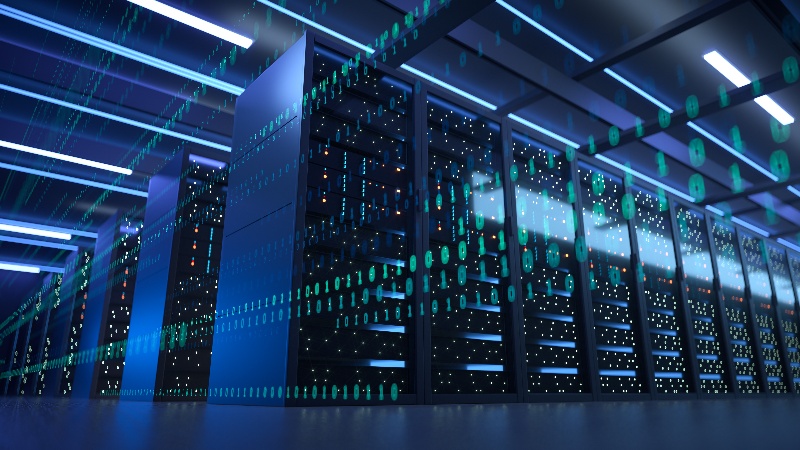I. Introduction: The New Foundation of AI Innovation
In the relentless race to harness artificial intelligence, a surprising truth has emerged: the winners aren’t always the teams with the most brilliant algorithms, but rather those with the right infrastructure to bring those algorithms to life. While groundbreaking research captures headlines, it’s the robust, scalable computing foundations that ultimately transform research into real-world products and services.
Modern high performance computing infrastructure has become the invisible force multiplier for AI enterprises—the difference between promising prototypes and production-ready systems that deliver consistent value. Think of it as the difference between building a sports car in a garage versus establishing a full-scale automotive factory. Both can create impressive vehicles, but only one can produce them reliably at scale.
In this guide, we’ll explore how to build an integrated HPC stack where compute, storage, and management work in perfect harmony. We’ll move beyond simply assembling hardware components to creating a cohesive system that accelerates your AI initiatives while controlling costs—because in today’s competitive landscape, your infrastructure isn’t just supporting your AI efforts; it’s actively enabling or constraining them.
II. The Four Pillars of Modern HPC Infrastructure
Building a modern HPC infrastructure is like constructing a high-rise building—it requires multiple interdependent systems working together, and weakness in any one element compromises the entire structure. Today’s AI-driven HPC infrastructure rests on four essential pillars:
- Compute Layer (GPU clusters): This is the engine room of your AI operations, where the actual number-crunching happens. Modern AI compute relies heavily on GPU clusters capable of handling the parallel processing demands of deep learning. Unlike traditional CPUs, GPUs can perform thousands of calculations simultaneously, making them ideal for training neural networks and running complex inferences.
- Storage Layer (High-performance parallel systems): Even the most powerful compute layer grinds to a halt without storage that can keep it fed with data. High-performance parallel storage systems are designed to serve massive datasets to multiple GPUs simultaneously, preventing the dreaded “data starvation” that leaves expensive hardware sitting idle.
- Networking (High-speed interconnects): The communication highways between your systems are just as important as the systems themselves. Technologies like InfiniBand and high-speed Ethernet ensure that data can flow quickly between storage and compute resources, and that multiple GPUs can work together efficiently on single problems.
- Management & Orchestration: This is the nervous system that coordinates all the other components. Without effective management, even the most powerful hardware becomes an underutilized collection of parts. This layer handles job scheduling, resource allocation, monitoring, and optimization across your entire infrastructure.
The crucial insight is that these pillars are deeply interconnected. A weakness in your storage system will cripple your compute investment, just as poor networking will prevent your GPUs from collaborating effectively. Building a successful HPC infrastructure requires thinking about how these components work together, not just about selecting individual pieces.
III. The Compute Engine: Choosing the Right GPU Foundation
At the heart of any AI-focused HPC infrastructure sits the GPU cluster—the workhorse that powers your machine learning workloads. But not all GPUs are created equal, and choosing the right foundation requires matching your hardware to your specific use cases:
NVIDIA H100/H200: For Extreme-Scale AI Training
These are the flagship data center GPUs designed for enterprises training foundation models or working with massive datasets. With specialized tensor cores and massive memory bandwidth, the H100 and its successor H200 can cut training times from weeks to days for large language models. If you’re building the next generation of AI capabilities or working with billion-parameter models, this tier provides the raw power needed to stay competitive.
NVIDIA A100: For Balanced Production Workloads
The A100 has proven itself as the reliable workhorse of production AI environments. Many enterprises find it offers the perfect balance of performance, stability, and ecosystem support for their ongoing operations. Whether you’re fine-tuning existing models, handling inference at scale, or running multiple concurrent experiments, the A100 delivers consistent performance without the premium price tag of the latest generation.
NVIDIA RTX 4090: For Development and Research
Don’t underestimate the power of consumer-grade hardware for the right use cases. The RTX 4090 offers remarkable performance for development work, prototyping, and smaller-scale research. For teams building proofs-of-concept or working with more modest datasets, these cards provide tremendous value and can serve as excellent development platforms before scaling to production hardware.
Your GPU selection cascades through every other infrastructure decision. Choosing H100s might necessitate different cooling solutions and power infrastructure than A100s. The RTX 4090 might fit into standard server racks but lack the remote management capabilities of data-center cards. The key is to align your GPU strategy with both your current needs and your anticipated growth trajectory.
IV. The Silent Killer: Infrastructure Management Overhead
Many organizations discover too late that purchasing hardware is only the beginning of their HPC journey. The silent killer that derails countless AI initiatives isn’t inadequate hardware—it’s the overwhelming management overhead that comes with running complex computing infrastructure.
Research suggests that AI teams often spend 40% or more of their time on infrastructure management rather than actual AI development. This isn’t just inefficient; it’s incredibly expensive when you consider the specialized talent being diverted from core innovation to IT administration.
The pain points are consistently reported across organizations:
- Resource Contention: Multiple teams competing for limited GPU resources, leading to scheduling conflicts and project delays.
- Configuration Complexity: Endless tweaking of drivers, libraries, and system settings to maintain optimal performance across different workloads.
- Scaling Challenges: The difficulty of moving from a few GPUs to dozens or hundreds while maintaining stability and performance.
The domino effect is devastating: poor management undermines expensive hardware investments, leading to low utilization rates, missed project deadlines, and frustrated technical teams. Your million-dollar GPU cluster becomes a cost center rather than the competitive advantage it was meant to be.
V. WhaleFlux: The Intelligent Layer for Your HPC Infrastructure
This is where WhaleFlux transforms the equation. Rather than adding another layer of complexity, WhaleFlux serves as the intelligent orchestration brain for your entire HPC infrastructure. It’s the management layer that allows you to focus on AI development while ensuring your hardware investments deliver maximum value.
WhaleFlux is a smart GPU resource management tool designed specifically for AI enterprises, and it delivers value through several key capabilities:
- Unified Management of Heterogeneous GPU Resources: In the real world, most organizations use multiple types of GPUs for different purposes. WhaleFlux provides a single control plane for managing everything from your flagship NVIDIA H100 clusters to your development RTX 4090workstations. This means consistent management, monitoring, and scheduling across your entire infrastructure.
- Automated Optimization Across Compute and Storage Layers: WhaleFlux doesn’t just manage your GPUs in isolation—it optimizes the entire data pipeline. The system intelligently stages data, manages memory usage, and coordinates between storage and compute resources to ensure your GPUs are always working at peak efficiency.
- Intelligent Workload Placement and Scaling: When you submit a job, WhaleFlux automatically determines the best placement based on current resource availability, job requirements, and priority levels. It can scale resources up and down as needed, ensuring that urgent projects get the resources they require while maximizing overall utilization.
The cost efficiency is undeniable: better utilization directly translates to faster ROI on your infrastructure investments. By increasing GPU utilization from 40% to 70%, WhaleFlux effectively gives you the equivalent of additional hardware without the additional capital expenditure. For organizations using our NVIDIA H100, H200, A100, or RTX 4090 solutions, this optimization means getting more value from every dollar spent on computing resources.
VI. Building vs. Buying: Strategic Approaches to HPC Infrastructure
When establishing your HPC infrastructure, organizations typically face a fundamental choice: build everything in-house or purchase fully managed solutions. Each approach has distinct advantages and trade-offs:
- Building In-House offers maximum control and customization but requires significant capital expenditure and specialized expertise. You’ll need to assemble a team capable of designing, implementing, and maintaining complex computing infrastructure—a challenging proposition in today’s competitive talent market.
- Fully Managed Solutions provide operational flexibility and reduce staffing requirements but can limit customization and create vendor dependency. While this approach gets you to production quickly, it may not perfectly align with your organization’s unique requirements.
WhaleFlux presents a compelling third way: managed infrastructure with control. Through our purchase and rental model (with a minimum one-month commitment), you get the benefits of professionally managed infrastructure while maintaining visibility and control over your computing environment. This hybrid approach lets you leverage WhaleFlux’s expertise in GPU management while ensuring the infrastructure aligns with your specific technical requirements and security policies.
The time-to-production considerations are particularly important. While building in-house might take months to design, procure, and configure, a WhaleFlux-based solution can have you running meaningful workloads in weeks, not months. This acceleration can be crucial in fast-moving AI domains where being first to market provides significant competitive advantages.
VII. Implementation Roadmap: From Zero to Production HPC
Building a production-ready HPC infrastructure doesn’t happen overnight, but following a structured approach can dramatically accelerate your timeline while avoiding common pitfalls. Here’s a practical roadmap for going from zero to production:
- Assess Current and Future Workload Requirements
Begin by thoroughly understanding your AI workloads. What types of models are you training? What are your data requirements? What are your performance targets? This assessment should cover both immediate needs and anticipated growth over the next 12-24 months. - Design Integrated Compute-Storage Architecture
Based on your workload assessment, design a balanced architecture where compute and storage capabilities are matched to prevent bottlenecks. This is where decisions about GPU mix, storage technology, and networking infrastructure come together into a cohesive design. - Implement Management and Monitoring Layer
Deploy your orchestration and management systems before scaling up hardware. This ensures that when your infrastructure comes online, you have full visibility and control from day one. - Scale and Optimize Continuously
HPC infrastructure isn’t a “set it and forget it” investment. Regular monitoring, performance analysis, and incremental optimization are essential for maintaining efficiency as workloads evolve.
WhaleFlux accelerates each step of this journey with proven templates and expertise. Rather than starting from scratch, you can leverage battle-tested configurations for different workload types, from large language model training to computer vision applications. Our team’s experience across multiple AI domains helps you avoid common mistakes and implement best practices from the beginning.
VIII. Conclusion: Infrastructure as Competitive Advantage
As we’ve seen throughout this guide, high performance computing infrastructure is strategic, not tactical. It’s not merely a cost of doing business in the AI space—it’s a fundamental enabler that determines what’s possible for your organization. The teams that recognize this distinction are the ones who will lead the next wave of AI innovation.
In the AI era, your infrastructure doesn’t just support your innovation efforts—it actively determines your innovation velocity. Teams with well-architected, efficiently managed HPC infrastructure can experiment more freely, iterate more quickly, and deploy more confidently. They spend their time advancing AI capabilities rather than troubleshooting infrastructure problems.
Ready to stop treating infrastructure as an afterthought and start leveraging it as a competitive advantage? Begin building your optimized HPC infrastructure with WhaleFlux’s managed GPU solutions today. Explore our range of NVIDIA H100, H200, A100, and RTX 4090 options and discover how our intelligent management platform can help you build the foundation for AI success. Don’t let infrastructure limitations constrain your ambitions—let WhaleFlux help you build the computing foundation that turns your AI vision into reality.

